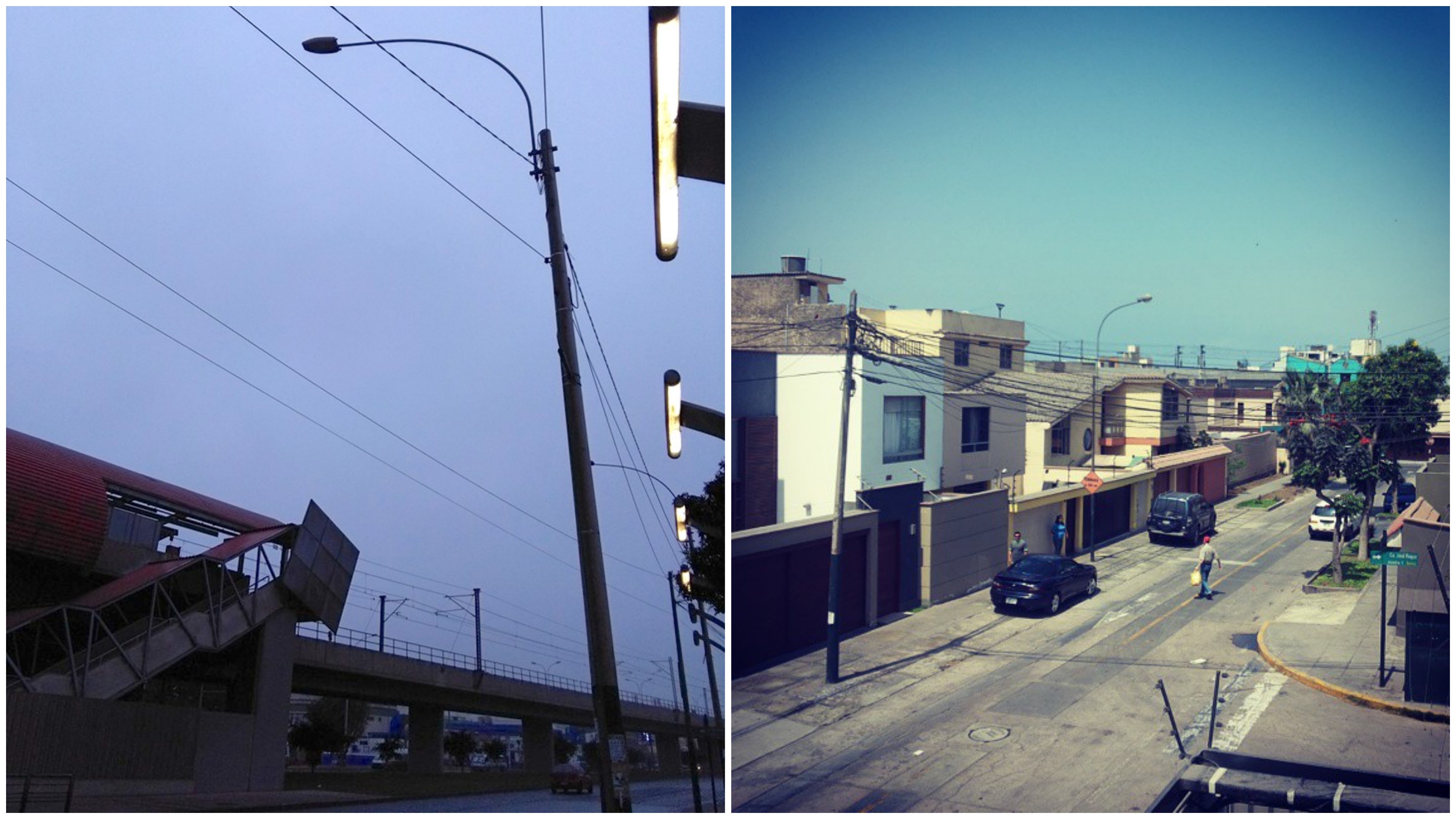
Uploaded on 2017-06-06 by Elizabeth Cárdenas Arroyo
"The impact of infrastructures such as transportation, water, health, and energy on urban form and architecture is a fact. With the beginning of the 21st century, buildings and cities are becoming physical and software systems in addition to collections of material and shapes. Water, energy, transportation and health infrastructure are thus crucial dimensions for the design of the future sustainable urban systems and the human habitat." With the 21th century, Lima finally got served by its electrical train or Metro, as it is called now. That was an electoral promise from the 80's that was unfinished. First image shows the Jorge Chavez Station and the impact that is has on the city transportation system. Also shows how our supply of electric energy goes through the skyline of the city. Second image shows again, electrical lines across the streets in front of houses. We can also see at the back, the elevated metro line. Tomas Marsano Avenue is a very important path of the city, it connects with other major paths as the Aviacion Avenue to the north, or Los Heroes Avenue to the south. The Metro Line 1 (the only one we have till now) goes all its way through these paths to connect the north and the south of Lima. We rely on electrical energy supply to move the metro, but the city also have to deal with all the cars and public transportation formal and informal buses that goes along the same avenues. Some people said ticket price was too expensive for thic city but in the end, we save a lot of time when using the metro. Still, there is the problem of not having enough train cars nor more lines to connect more parts if the city. That should give limeños better mobility. Lima is growing fastly since the 50s. But now the infrastructures have been more focused on electricity lines and cellular antennas. What we need to improve, as seen by the last El Niño phenomenon (March 2017) is that water infrastructure is not prepared for that kind of situation. Nor will be the health infrastructure in the city. (Photos by my husband, José N. Marteleira)